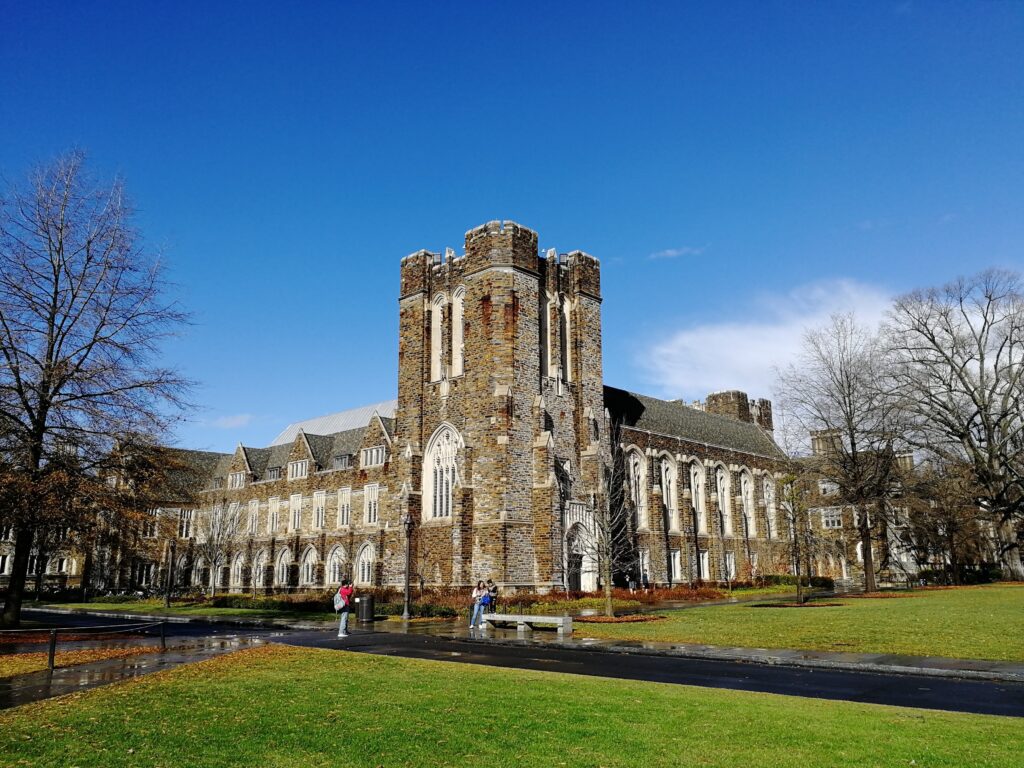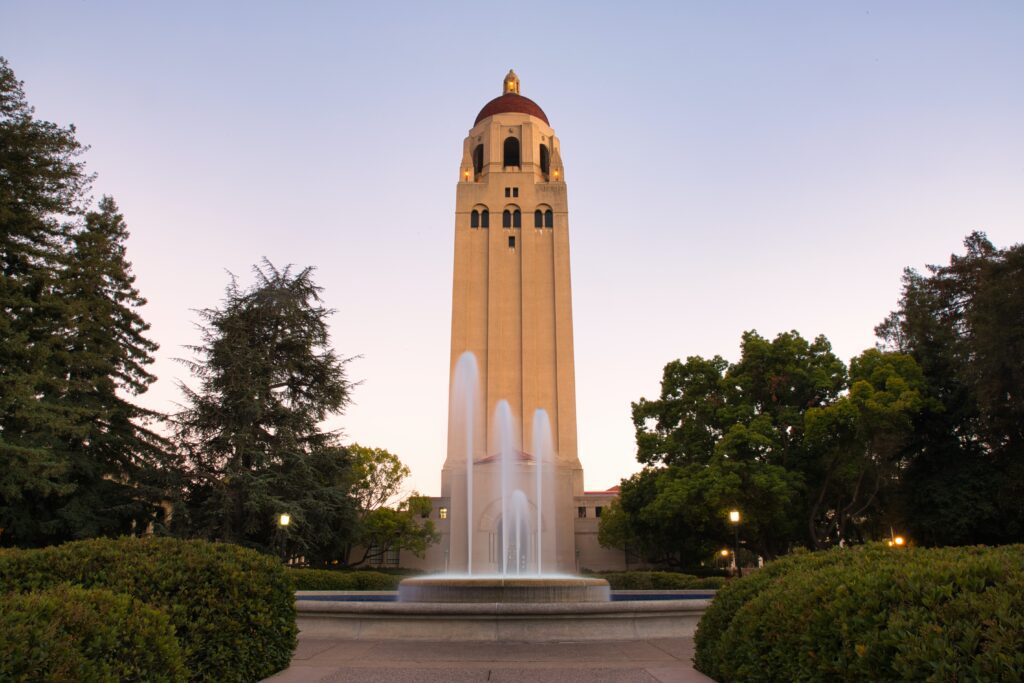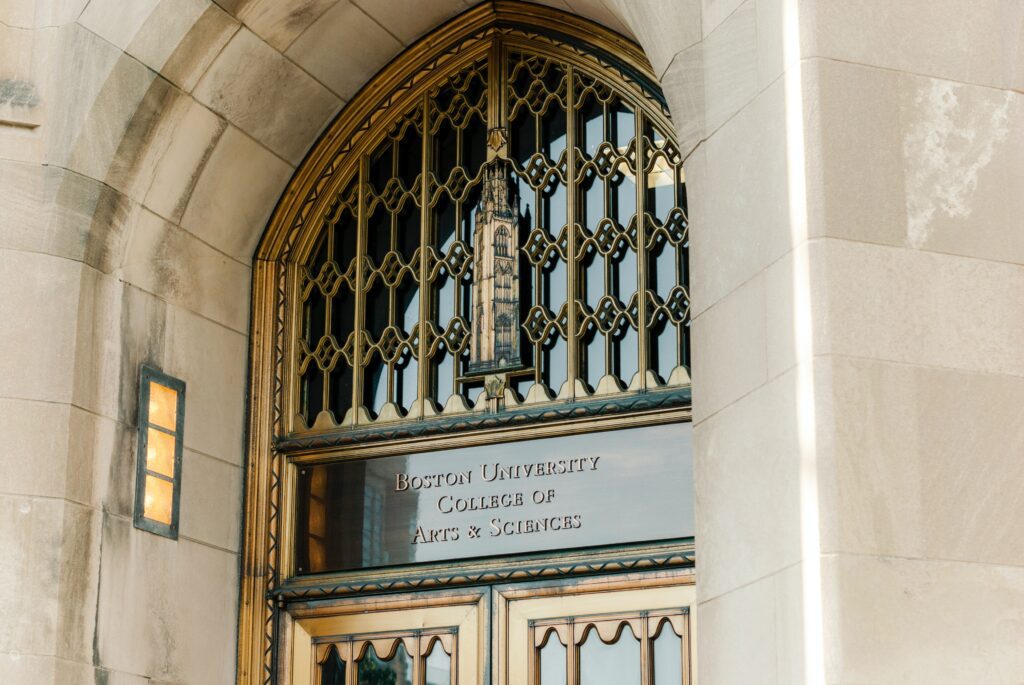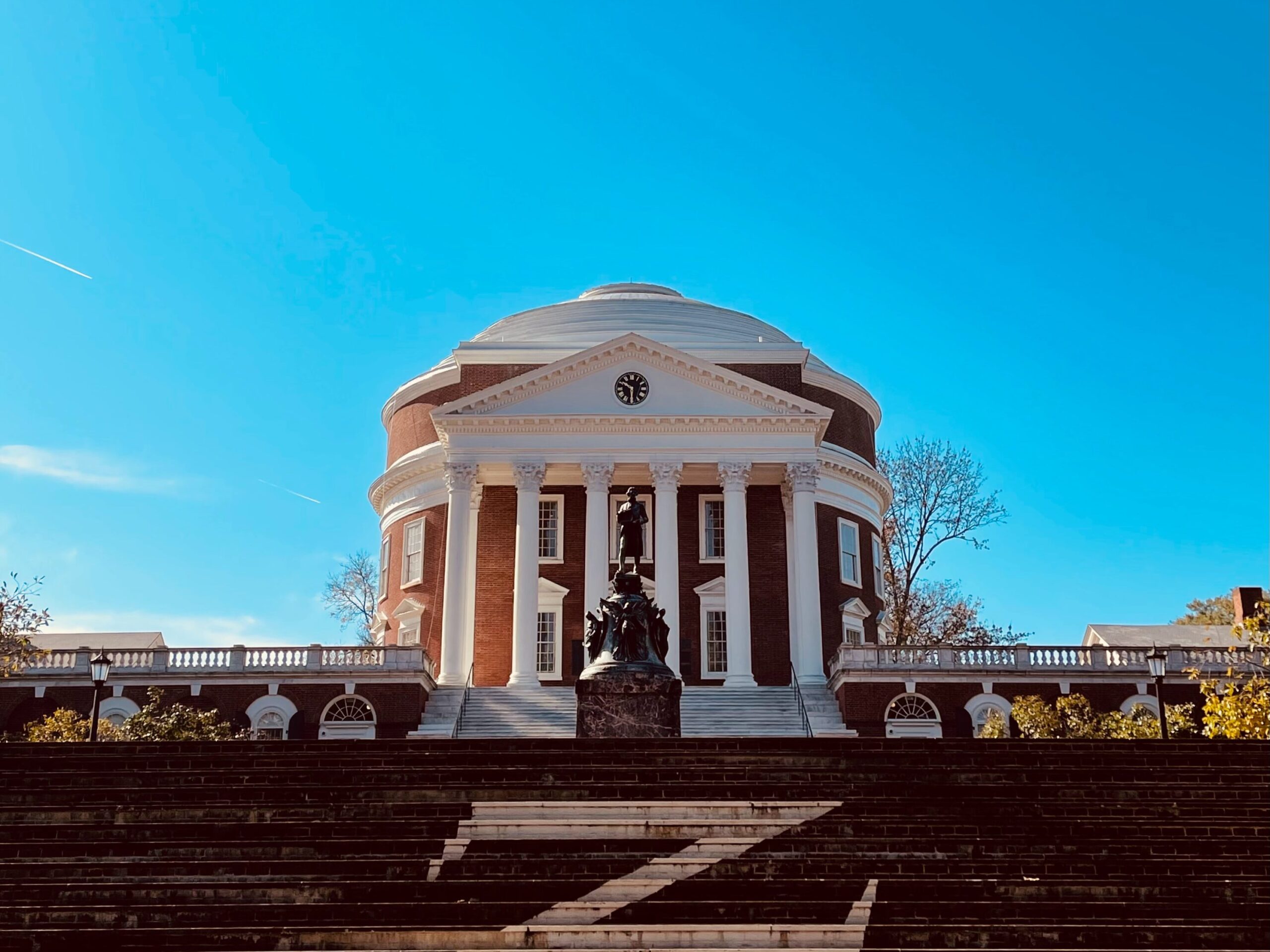
College Application Deadlines – Introduction
Understanding college application deadlines is a key part of planning for the college admissions process. You may have just started building your college list. Or, maybe you are already looking forward to submitting college applications. Either way, your college application deadlines will have a significant impact on your college application process.
Nowadays, it’s easy to see all your college application deadlines on platforms like the Common Application and Coalition Application. But what does it actually mean to apply early? How are the college application deadlines different? What’s important to consider when choosing a college application deadline?
If you are looking for college application guidance on navigating college application deadlines, you’re in the right place! With terms like Early Decision, Regular Decision, Early Action, rolling admission, and Restrictive Early Action, it’s easy to get overwhelmed. There are many nuances to understanding college application deadlines, and we’re here to help.
In this guide, we will cover everything you need to know about figuring out when your college applications are due.
First, we will answer questions about different college application deadlines you might encounter when submitting college applications.
College Application Deadline Guide covers:
- What are Regular Decision, Early Decision, and Early Action?
- What’s the difference between Early Action and Early Decision?
- What are the pros and cons of Early Action vs Early Decision?
- What are the differences between Early Action vs Regular Decision and Early Decision vs Regular Decision?
- Can you apply Early Action to multiple schools?
- Does Early Decision increase chances of admission, or does Early Action increase chances of admission?
- Does Early Decision increase chances of admission, and does Early Action increase chances of admission?
- Ivy League Early Decision stats and deadlines, including:
- More deadlines for top schools, like the Stanford Early Action and MIT Early Action deadlines
- Deadlines for UC schools and CSU schools
- Deadlines for international college applications
We hope that this helps you as you think about submitting college applications and choosing the right college application deadlines for different schools.
To begin our deep dive into college application deadlines, let’s start by discussing the most common type of college application deadline: Regular Decision.
What are the Regular Decision deadlines?
Regular Decision is the most popular of all the college application types.
At most schools, the deadline for Regular Decision is in early January.
To prepare for these college application deadlines, most students start their applications at the beginning of their senior year. Typically, the Common Application opens on the first of August each year.
The importance of starting early

If you plan to start applications in early fall, it may feel like college application deadlines are ages away. However, senior year is often the busiest time for students. Between classes, extracurriculars, and spending time with friends, college application deadlines can sneak up on you quickly. This is especially true if you are working towards an Early Decision or Early Action deadline. Because of this, many students find themselves working on and submitting college applications over their winter break.
Even if you aren’t planning to apply to Early Action colleges or Early Decision colleges, start early. You’ll ease stress and have the flexibility to work on your applications a little at a time. As you plan your college admissions timeline, you should finish submitting college applications by the end of December. Give yourself a few days to finalize your application materials before submitting college applications to your selected schools.
Now, let’s look at some specific college application deadlines. For most schools, the Regular Decision deadline falls in the first week of January.
Examples of Regular Decision deadlines
While January is the norm for many schools, some schools’ Regular Decision deadlines fall well before the end of the year. For example, the UC application deadline falls quite early on November 30th, closer to many other schools’ Early Decision deadline. This is another reason to plan ahead for college application deadlines.
Researching college application deadlines
As soon as you finalize the schools on your college list, confirm your school’s college application deadlines. A great resource to find your college application deadlines is the Common Application site. If you navigate to the “My Colleges” tab on the Common Application, you’ll find a list of your schools. Then, if you click each school, you’ll find the school’s contact information followed by their college application deadlines.
Depending on accepted college application types, you’ll see an Early Decision deadline, an Early Action deadline, and a Regular Decision deadline. While the Common Application is a trusted resource, we recommend double-checking your college application deadlines with each school’s website. You should also check each school’s Early Action vs Early Decision deadline, as some schools offer both, one, or none.
Don’t miss your Regular Decision deadlines
Remember, if you miss the Regular Decision deadline, you’ve likely also missed the Early Action deadline and Early Decision deadline. In other words, you won’t have another chance to submit your application. Be mindful of submitting college applications by your college application deadlines and confirming your college application deadlines for every school. If you miss the Regular Decision deadline, you have a few options, including taking a gap year. That being said, if you’re planning for college, missing the deadline is a non-starter.
As stated, Regular Decision is the most common type of college application deadline. However, there are other college application types. For every school on your list, decide whether to apply through Regular Decision or an earlier college application deadline. The college application deadline you choose will determine when you can expect to get your admissions decision. Generally speaking, most early applicants will receive an admissions decision sometime in early December, and regular applications will hear back around March. If you choose to apply to an Ivy League school Regular Decision, you’ll hear back on Ivy Day in the spring.
Later on, we’ll discuss Early Action vs Early Decision, plus Early Action vs Regular Decision and Early Decision vs Regular Decision. For now, we’ll move on to applying to Early Decision colleges.
What does Early Decision mean?
Now, let’s talk about one of the most exciting (and sometimes nerve-wracking) college application deadlines: Early Decision. The Early Decision deadline is usually the earliest of the college application deadlines. In most cases, the Early Decision deadline is in early to mid-November, and decisions come by December. Early Decision colleges only allow students to apply to one school, meaning you can’t apply Early Decision to multiple schools.

Unlike other college application deadlines, Early Decision is binding. That means that by applying Early Decision, you commit to enrolling if accepted. So, you should think carefully about which school’s Early Decision deadline you choose to apply for. This is one of the biggest differences between Early Action vs Early Decision—we’ll discuss this difference more later.
Deciding to apply by the Early Decision deadline can also have a major impact on financial aid. Financial aid is an important consideration for many applicants. If you want to compare aid packages between multiple schools, you likely should not apply Early Decision. Whether you’re a first-generation student or a legacy applicant, sufficient aid is seldom guaranteed, so think carefully.
Let’s keep looking at the differences between Early Action vs Early Decision vs Regular Decision college application deadlines.
Early Decision Outcomes and Alternatives
Early Decision colleges will give one of three admissions decisions. You can expect to receive an acceptance, a rejection, or a deferral. If you’re deferred, your application will be reconsidered within the Regular Decision pool. Remember, while you can only submit one Early Decision application, there’s no limit on Regular Decision applications. If you’re deferred, you could send a letter of continued interest while you wait.
However, if you are deferred, you’ll be released from your binding Early Decision agreement. So, if you are deferred and subsequently accepted within the Regular Decision review process, you aren’t obligated to enroll. This can be helpful for students who know their dream school but are still flexible.
Some schools also have an Early Decision II program. This type of application is still binding, but you won’t need to submit your application until January. This is good if you want the benefits of Early Decision but can’t meet the first Early Decision deadline. For schools that value demonstrated interest, applying Early Decision II can significantly increase your admissions odds.
When considering Early Action vs Early Decision, it’s important to remember that not every school has an Early Decision program. With that in mind, let’s finish our introduction to college application deadlines with the last of the college application types: Early Action.
What is Early Action?
If you’re debating between Early Action vs Early Decision, understanding the ins and outs of both is key. Early Action has many similarities with Early Decision. Your application is due by an earlier November deadline, with an admissions decision in December. Also similar to Early Decision colleges, Early Action colleges will either accept, reject, or defer applicants. Most public institutions have Early Action programs.
Examples of Early Action deadlines for public universities:
- University of Georgia: October 15th
- North Carolina State University: November 1st
- Ohio State University: November 1st
- University of Oregon: November 1st
- University of Virginia: November 1st
- University of Colorado Boulder: November 15th
- University of Maine: November 30th
- University of Kentucky: December 1st
Remember, college application deadlines can change from year to year, so be sure to confirm your school’s Early Action deadline.
When considering Early Action vs Early Decision, there is one key difference to consider. Early Action is non-binding, which means you can apply early without committing to attending the school if accepted. There are several benefits to choosing Early Action vs Regular Decision. Early Action has a smaller (and often more competitive) applicant pool, quicker admissions decisions, and flexibility to apply to other schools.
Can you apply early action to multiple schools?
Since Early Action is non-binding, you may be asking yourself: can you apply Early Action to multiple schools? In most cases, the answer is yes (the one exception is Restrictive Early Action, which we will discuss later). When submitting college applications, you can apply Early Action to multiple schools. You could also submit one Early Decision application and then apply Early Action to different schools. However, students accepted into Early Decision colleges must attend, regardless of any other applications.
Now, let’s take a closer look at the difference between Early Action and Early Decision.
The Difference Between Early Action And Early Decision

Early Action vs Early Decision: these two college application deadlines have a lot in common. So, what’s the difference between Early Action and Early Decision?
As previously stated, when looking at Early Action vs Early Decision, Early Action is non-binding while Early Decision is binding. If you’re accepted Early Decision, you have to enroll.
With this key difference in mind, submitting college applications by the Early Action deadline may be better for some students. For example, those looking to compare financial aid packages at different schools can consider multiple offers. In another example, perhaps you’re not 100% positive about one of the Early Decision colleges on your college list. In this case, applying to one of your Early Action colleges can yield an admissions decision before you apply elsewhere. So, there are plenty of reasons students apply Early Action.
Does Early Decision increase chances?
You might also ask, does Early Decision increase chances? Yes. Applying to Early Decision colleges often provides a larger boost in admissions odds because early applicants are obligated to enroll. By admitting more students in the Early Decision cycle, schools can boost their yield rates, which can increase their rankings.
When comparing Early Action vs Early Decision, you might want to keep your admissions odds in mind. If you’re wondering, does Early Action increase chances too?, the answer is often yes. However, the admissions boost for Early Action colleges is often far smaller than for Early Decision colleges. Overall, you shouldn’t apply Early Action to a given college just to increase your admissions odds.
When debating Early Action vs Early Decision, keep in mind that not all schools have Early Decision plans. For instance, Harvard, Yale, Princeton, and Stanford do not have an Early Decision deadline. Instead, they use a single-choice Early Action policy, also known as Restrictive Early Action. If you have questions about Restrictive Early Action, don’t worry. Later, we’ll discuss Early Action colleges. We’ll also answer the question, “Can you apply Early Action to multiple schools?”
Rolling Admission Schools
As you research college application deadlines, you might come across schools with a rolling admission process. In rolling admission, a school accepts and evaluates applications throughout a given window, offering acceptances on a “rolling” basis. With a rolling admission process, you might expect to hear back 8–12 weeks after your application has been submitted.
Some schools offer rolling admission after their typical application period; others offer rolling admission concurrently with other college application deadlines. For example, Michigan State opens rolling admission after its Regular Decision deadline. On the other hand, Penn State opens its rolling admission process at the same time as they do Early Action.
If you’re applying under rolling admission, you’ll want to submit your application on the early side. Throughout the admissions process, places will fill up at rolling admission schools. So, the earlier you apply, the better your odds will be.
Now that we’ve discussed Early Action vs Early Decision, let’s see how these college application deadlines compare to Regular Decision. What are the advantages and disadvantages of each?
Early Action vs Regular Decision

If you compare Early Action vs Regular Decision, you’ll see many similarities. Unlike Early Decision, you can send out as many of these applications as you want. Moreover, there’s no obligation to enroll at any school that accepts you Early Action. The only key difference between Early Action and Regular Decision is the application timeline.
If you apply by a school’s Early Action deadline, you’ll receive a decision in December. If you apply by a school’s Regular Decision deadline, you’ll receive a decision in the spring, typically in March. As a result of this timeline, some students are deferred during the Early Action cycle. This means their applications will be reconsidered during the regular cycle.
Many students consider Early Action vs Early Decision and decide that Early Decision is too much of a commitment. If that’s you, then we highly encourage you to research the many great Early Action colleges out there. We all know submitting college applications can be stressful enough. Successfully completing one early can give you a confidence boost as you prepare to tackle other applications in December.
Early Decision vs Regular Decision
Conversely, maybe you’ve found your dream school and weighed the benefits of Early Action vs Early Decision. Now, you’re considering applying Early Decision. If this is you, remember the key differences between the Early Decision and Regular Decision cycles.

Early Decision is binding, while Regular Decision, of course, is not. Early Decision will give you an admissions decision far earlier than if you applied Regular Decision (unless you are deferred). However, you won’t have a chance to weigh different financial aid packages. There are some key questions to consider when deciding which admissions cycle to apply under.
Ask yourself the following questions
- Would you be excited to attend this school over any other if accepted?
- Are you confident that you could attend this school regardless of your financial aid outcome?
Don’t forget that you can submit other Early Action and Regular Decision applications, too. If you do decide to apply Early Decision, don’t put off starting your other college applications so you stand out. After all, Early Decision colleges hand out hundreds of deferrals and rejections every year. If you’re not accepted, a safety net of other applications can spare you unnecessary stress and panic when submitting college applications in January.
Can you apply early action to multiple schools?
Another question when debating Early Action vs Early Decision is, “Can you apply Early Action to multiple schools?”. In most cases, the answer is yes—you can apply to multiple Early Action colleges. If you’re only applying to Early Action colleges, you can essentially complete a standard Regular Decision application cycle early.
As mentioned above, Regular Decision and Early Action are similar in that there’s no application limit. They’re non-binding, so you can apply to one or twelve or twenty schools if you want. (We recommend keeping your application count to twelve and under, though.) However, some Early Action colleges have single-choice Early Action policies, also known as Restrictive Early Action.
What is Restrictive Early Action?
Under Restrictive Early Action (used by Harvard, Yale, Princeton, and Stanford), students cannot apply Early Action to another private institution. However, you aren’t obligated to attend if you’re accepted. To put it differently, you’ll be limited to a single non-binding Early Action application. You can, however, apply Early Action to a public university. Of course, you should still plan to submit the rest of your applications ahead of the Regular Decision deadline.
When comparing Early Action vs Early Decision, you can think of Restrictive Early Action as a non-binding Early Decision. You still get benefits from a smaller applicant pool and a higher acceptance rate, but without the commitment to attend. Additionally, Restrictive Early Action only allows you to apply to one private Early Action deadline, just like you can only apply to one Early Decision deadline.
Restrictive Early Action – How and Why
For instance, you could not apply Early Action to both Harvard and Yale, as both are Restrictive Early Action. However, you could choose the Early Action deadline for both Harvard and UT Austin. You should be strategic about not only which schools you apply to, but also which college application deadlines you choose. This way, you can maximize your odds of admission to your top schools and prepare for any scenario.
Since Early Action is always non-binding, why even have Restrictive Early Action vs Early Action vs Early Decision policies? Well, financial aid awards heavily influence many students applying Early Action vs Early Decision, and ultimately what school they attend. Certain students want or need the flexibility to back out of an acceptance if they can’t afford to attend. Top schools offer Early Action vs Early Decision to make early application more financially accessible to students who need to compare aid packages.
Hopefully, this discussion of Early Action vs Early Decision vs Regular Decision has given you a better idea of what to expect so you can plan out your college application deadlines. Next, we’re going to look at how applying in different application cycles affects acceptance rates. That way, you can learn whether applying by a school’s Early Decision or Early Action deadline increases your admissions odds.
College Application Deadlines and Acceptance Rates

It’s important to understand trends in college admissions before you start submitting college applications or building your college list. This includes understanding the different college application types, like Early Decision, Early Action, Regular Decision, and rolling admission.
As you learn more about college application deadlines, you’ve likely thought about the link between college application deadlines and acceptance rates.
We explored the distinction between Early Action vs Early Decision earlier in this guide.
When will admissions decisions arrive?
As a refresher, Early Decision college application deadlines are typically in early to mid-November. If you apply to college under the ED deadline, you can expect to receive your admission decision in mid-December. The Early Action deadline is also in early to mid-November. If you apply via Early Action, you can also expect to receive your admission decision in mid-December.
For Regular Decision deadlines, you must submit your college application between early January and mid-February. When you apply Regular Decision, your admission decision will arrive in mid-March to early April.
There’s another college application type called rolling admission. Rolling admission deadlines vary, as you can expect from the name. If you apply to a college that offers rolling admission, you can expect to receive your admission decision 8-12 weeks after submission. However, note that the timeline for rolling admission can vary across different schools.
Early Action vs Early Decision acceptance rates
There are varying college application deadlines and acceptance rates for every college and university in the United States. Each of the college application types—Early Decision, Early Action, Regular Decision, and rolling admission—will have corresponding college application deadlines. You’ll need to research the college application deadlines for each school you plan to apply to. As you build your college list, you’ll need to decide whether to apply via Early Action vs Early Decision, Regular Decision, or rolling admission.
So, does Early Decision increase the chances of admission? Does Early Action increase the chances of admission? What’s the difference between Early Action and Early Decision, Early Decision vs Regular Decision, and rolling admission?
We’ll explain the answers to all these questions (and more) in the following sections of this guide. For our first piece of college application guidance, let’s discuss how the Early Decision college application deadline influences acceptance rates.

Early Decision
Before you start submitting college applications, you might want to know what each school’s acceptance rate is based on the various college application deadlines. This matters even more at highly competitive colleges and universities. Understanding how acceptance rates change based on college application deadlines can help you decide whether to apply Early Action vs Early Decision, Regular Decision, or rolling admission.
So, does Early Decision increase chances of admission?
At most schools, the answer is yes. Applying through an Early Decision college application deadline does increase your chances of admission.
The acceptance rates for Early Action vs Early Decision are generally higher than Regular Decision acceptance rates. Later on, we’ll look at some examples of this for certain Ivy League schools.
However, just because acceptance rates are higher for ED does not mean that you will be guaranteed admission if you apply by this college application deadline. Applicants who are submitting college applications through the Early Action vs Early Decision college application deadlines are generally equally qualified. In most cases, they might be more qualified than applicants who are submitting college applications through a Regular Decision college application deadline. This means that the EA/ED college application deadlines often create a more competitive admissions pool, which can also account for higher EA/ED acceptance rates. Keep this in mind as you review college application deadlines and acceptance rates.
Early Action
Now that we know that applying to an ED college application deadline can increase your chances of admission, let’s talk about the Early Action deadline.
Does Early Action increase chances of admission? The answer is also yes, but less significantly.
Applying to an Early Action deadline does not significantly boost your chances of admission like ED does.
However, most Early Action colleges will show higher acceptance rates if you apply to their Early Application college application deadline vs their RD deadline.
Applying through a Restrictive Early Action deadline can also slightly improve your chances of admission. However, once again, the REA deadline at most elite schools attracts a pool of highly competitive applicants. So, while the acceptance rate for Restrictive Early Action at Harvard, for instance, might be higher than the RD acceptance rate, you should be cautious about applying those numbers on an individual basis. You’ll want to review the acceptance rates for these early college application deadlines as you are deciding between Early Action vs Early Decision.
In general, you’ll find that the Early Decision (or even Early Action) acceptance rate is higher than a school’s overall acceptance rate. In other words, your chances of admission might change based on the college application deadline you apply under. Much of this has to do with the college rankings system.
Why are college acceptance rates higher in Early Decision cycles?
By accepting more students in the early cycle of college application deadlines (like Early Decision or Early Action), schools decrease their Regular Decision acceptance rates. This can increase their rankings.
Also, and more importantly, schools care deeply about their yield rates. This means that they want as many students as possible to accept their admission offers. So, by accepting more students in a binding Early Decision cycle, schools also increase their yield rates.
However, keep in mind that Early Action vs Early Decision pools are often filled with highly qualified applicants. So, in some part, the inflated acceptance rates you’ll see result from the strength of applicants, not from lower admissions standards.
Considering the impact on admissions
To recap, applying Early Action vs Early Decision can impact your chances of admission. If you are planning to apply to top colleges and universities, you should review the Early Action vs. Early Decision college application deadlines (and acceptance rates). Use these stats to give yourself the best chance of being accepted.
Before you finalize which college application deadline you plan to apply under, be sure to do your research. You’ll want to review the college application deadlines and corresponding acceptance rates for each of the colleges on your list. Additionally, you’ll want to consider the advantages and disadvantages that each college application type brings with it.
For more general information about all things college applications, check out our How to Apply for College page.
Early Action vs Regular Decision Acceptance Rates
Now that we understand some reasons why Early Action acceptance rates are higher and the difference between Early Action vs Early Decision, let’s look at some statistics.
Harvard University

Harvard uses a single-choice Restrictive Early Action plan. This means students cannot apply early to any other private institution if they choose to apply to Harvard under this college application deadline.
The Harvard overall acceptance rate is just 3%. However, last year, the Harvard Early Action acceptance rate was nearly 8%. Even though it is not the largest increase, it is an important consideration as you determine which college application deadline to submit your Common Application through.
Harvard does not consider demonstrated interest, nor is its Restrictive Early Action (REA) program binding. So, while the Early Action acceptance rate is certainly higher, it still likely won’t make a huge difference in the admissions process. The Harvard Early Action pool is competitive, and you’ll need strong grades, scores, and essays to get in, regardless of the college application deadline you choose.
Duke University

The Duke Early Decision acceptance rate is around 20%, while the school’s overall acceptance rate is around 8%. So, like Harvard, applicants who are submitting college applications through Early Decision will see a significantly higher acceptance rate at Duke.
Although the Duke Early Decision acceptance rate is significantly higher, there are other factors to consider before you choose to apply by their ED college application deadline.
No demonstrated interest
For instance, Duke does not officially track demonstrated interest. However, by applying to the Early Decision college application deadline and committing to attend, applicants admitted through Duke Early Decision contribute to a higher yield rate. As evidenced by the Duke Early Decision acceptance rate, applying to the Duke Early Decision college application deadline might actively increase your admissions odds.
Although acceptance rates for Harvard and Duke were higher in the early college application deadlines, this won’t always be the case for other Early Action colleges or other top colleges and universities. If you know that you want to apply to elite universities, we encourage you to do your research on each institution’s college application deadlines and acceptance rates.
Does Early Decision increase chances?
If you are having a hard time deciding between Early Action vs Early Decision, that’s okay. Let’s examine how applying to an Early Action vs Early Decision college application deadline might increase your chances of admission.
Often, applying Early Decision can increase your chances of admission. While this is not the case at every school, statistically speaking, many colleges have incentives to accept more students through a binding Early Decision cycle. In other words, if colleges can offer you admission through an earlier college application deadline, they could be rewarded for doing so.
Still, keep in mind that this varies by school and by college application deadline. Schools that value engagement and demonstrated interest are more likely to prioritize Early Decision applicants. This could be one way for you to determine whether an Early Action vs Early Decision college application deadline is right for you.
Beyond acceptance rates
Once again, Early Decision pools also are often filled with prepared and qualified applicants who would have higher chances of admission in any cycle, regardless of the college application deadline. So, at the end of the day, an acceptance rate can only tell you so much.
While applying to an Early Decision deadline can certainly increase your admissions odds, you shouldn’t apply Early Decision to a school just because you think it will help you get in. Remember, Early Decision college application deadlines are binding, so if you are granted admission to a college via an ED college application deadline, you will be required to attend.
Instead, you should choose your Early Decision school because you genuinely want to attend that college and are prepared to enroll should you be accepted.
Does Early Action increase chances?
Now that we know more about how applying to an ED college application deadline increases your chances of admission, can the same be said of Early Action colleges?

Based on numbers alone, Early Action acceptance rates tend to be higher than their Regular Decision counterparts. However, that does not mean that applying by the Early Action college application deadline will dramatically increase your admissions odds. Understanding this could help you decide whether applying Early Action vs. Early Decision is right for you.
Maybe a small boost
It might give your application a bit of a boost to apply by an Early Action college application deadline, but it likely won’t make a massive difference. Overall, Early Decision cycles give applicants far more of an advantage than Early Action ones do, and even that advantage is complicated by a variety of factors.
In general, you should largely look at your Early Action admissions odds as similar to your Regular Decision admissions odds as you review college application deadlines.
If you’re still unsure whether to apply by an Early Action vs Early Decision deadline, that’s okay! Let’s look at college application deadlines for Ivy League colleges (where applying to early college application deadlines can help increase your chances of acceptance).
Ivy League College Application Deadlines
Determining whether to apply to Early Action vs Early Decision can be a tough decision, but it doesn’t have to be. By doing your research on college application deadlines early, you can have the information you need to make a smart choice between Early Action vs Early Decision.
Next, we’ll explore how college application deadlines impact acceptance rates at some Ivy League universities. But first, let’s look at the Ivy League college application deadlines.
| Ivy League College | Restrictive Early Action Deadline | Early Decision Deadline | Application Deadline |
| Princeton University | November 1 | January 1 | |
| Harvard University | November 1 | January 1 | |
| Yale University | November 1 | January 2 | |
| University of Pennsylvania | November 1 | January 5 | |
| Dartmouth College | November 1 | January 3 | |
| Brown University | November 1 | January 5 | |
| Cornell University | November 1 | January 2 | |
| Columbia University | November 1 | January 1 |
In an effort to simplify the college admissions process, the Ivy League colleges have provided some college application guidance regarding their college application deadlines, called the Ivy League Agreement.
The Ivy League Agreement details the admissions procedures of the Ivy League schools, including the timing of decisions, early college application types, and college application deadlines.
If you are submitting college applications to Ivy League schools, you can expect your admission decision letters to arrive at one of two times. Moreover, if you applied by the Restrictive Early Action or Early Decision deadline, you can expect to hear back by mid-December. Also, keep in mind that if you applied by the Regular Decision deadline, you can expect to hear back by late March/early April.
Only one Ivy League college
It’s important to note that you can only apply to one Ivy League college through an early application deadline. For example, if you are planning on submitting college applications to Yale and Cornell, you wouldn’t be able to apply Restrictive Early Action to Yale and Early Decision to Cornell under these guidelines.
In other words, if you choose to submit your application by the Cornell Early Decision deadline, you will have to apply to Yale under the Regular Decision deadline. This is another important factor to consider as you decide whether to apply Early Action vs Early Decision.
The Early Decision colleges in the Ivy League are Brown, Columbia, Cornell, Dartmouth, and UPenn. The Restrictive Early Action colleges in the Ivy League are Princeton, Harvard, and Yale.
Generally, you can expect to see higher acceptance rates from Ivy League colleges if you are submitting college applications through the early college application deadlines.
In other words, you may increase your admissions odds at Early Action colleges and Early Decision colleges if you apply by the Early Action deadline or Early Decision deadline. However, how large the actual percentage increase is for Early Action vs. Early Decision is different for every school.
Always a “reach”

The Ivy League colleges are considered “reach” schools for all applicants based on their low college acceptance rates. So, if you are looking to increase your admissions odds and you want to attend an Ivy League college, you should consider submitting college applications to your school of choice by the early college application deadline.
Please note that the Ivy League college application deadlines listed above are for the 2022-2023 admissions cycle. Before you decide whether Early Action vs Early Decision is right for you, you’ll want to verify the college application deadlines for the colleges on your list. Although the college application deadlines won’t change drastically per admissions cycle, they can change each year.
You can view the college application deadlines for the colleges on your list by visiting their respective websites. Or, you can view the college application deadlines on the Common Application.
Harvard Early Decision

The term “Harvard Early Decision” is a bit of a misnomer. In truth, Harvard does not have an Early Decision deadline or program – instead, it has a Restrictive Early Action program.
This means that if you apply Restrictive Early Action (REA) to Harvard, you cannot apply to the Early Decision deadline to any school, nor Early Action to any other private institution. The key word here is restrictive – applying REA prevents you from submitting college applications to other ED or EA college application deadlines. Instead, you’ll have to apply via Regular Decision or rolling admission to other colleges and universities.
The Harvard Restrictive Early Action deadline is November 1, and the Regular Decision deadline is January 1. You’ll apply to Harvard via the Common Application, regardless of which college application deadline you choose.
For more information on Harvard admissions, including FAQs about Harvard’s college application deadlines, visit their website.
Does Yale Have Early Decision?
No – like Harvard, Yale only has a single-choice Early Action program. The Yale Early Action deadline is November 1. Also, like Harvard, this is a Restrictive Early Action deadline.
Basically, this means you cannot apply Early Decision to any school or Early Action to any other private institution. Instead, you’ll have to apply through a Regular Decision deadline or a rolling admission deadline.
Like the other Early Action colleges, there is also a Yale Regular Decision deadline. The Yale Regular Decision deadline is January 2.
You’ll also utilize the Common Application to apply to Yale. Visit the Yale admissions page to learn more about the single-choice Early Action deadline and Yale Regular Decision deadline.
UPenn Early Decision Acceptance Rate

One of the Ivy League’s Early Decision colleges is the University of Pennsylvania. The Early Decision deadline at UPenn is November 1, and the Regular Decision deadline is January 5. Like Harvard and Yale, you can also apply to UPenn via the Common Application.
The UPenn Early Decision acceptance rate can change each year and is influenced by the total number of applicants. However, you can expect the UPenn Early Decision acceptance rate to be higher than the Regular Decision acceptance rate.
For the entering class of 2026, the UPenn Early Decision acceptance rate was about 16%, slightly higher than the Regular Decision acceptance rate of around 9%. So, you may increase your admissions odds at UPenn if you decide to apply through the Early Decision deadline.
Cornell Early Decision
Another one of the Ivy’s Early Decision colleges is Cornell University. Like UPenn, the Cornell Early Decision deadline is November 1. If you plan to apply to Cornell, you can also use the Common Application.
The Cornell Early Decision acceptance rate is about 21%, which is significantly higher than the Regular Decision acceptance rate of around 9%.
As you can see, you may increase your admissions odds at these Early Decision colleges, UPenn and Cornell, if you apply by the ED college application deadline.
Columbia Regular Decision Deadline

The Columbia Regular Decision deadline is earlier than the RD deadline for the Early Decision colleges – January 1. The ED college application deadline at Columbia is the same as the other Early Decision colleges – November 1. Columbia is also on the Common Application.
The Columbia Early Decision acceptance rate is roughly 10%, which is more than double the Regular Decision acceptance rate of around 4%.
If you apply by the Columbia Regular Decision deadline, you’ll face a pretty competitive admissions pool. Because the Columbia ED acceptance rate is higher than the RD acceptance rate, you have a slightly better chance of receiving admission via the Early Decision deadline.
However, as we mentioned above, you can expect other applicants with strong candidate profiles, including test scores, GPAs, and college essays, to also apply in the ED cycle. Remember, just because a college has a higher ED acceptance rate does not mean you are guaranteed admission if you apply by that early college application deadline.
Exploring more college application deadlines
We’ve walked through various college application deadlines and what they mean. Before you begin planning your dorm room and thinking about what organizations you want to join, let’s make sure you fully understand the application process for your dream school. After all, successfully enrolling at a college on the top of your college list begins with an organized and thoughtful application process.
Now that you understand Early Action vs Early Decision deadlines, you should have some idea of what college application deadlines to plan for. Are you interested in Early Action vs Early Decision? Or Regular Decision vs Restrictive Early Action? Understanding the most appropriate application deadline to choose is critical to your success. Keep reading for more college application guidance.
Specifics around college application deadlines can vary across different schools. However, there are several commonly understood features of all college application types. As we’ve discussed, the Early Action deadline is an early notification non-binding application plan. Submitting a college application before the Early Action deadline has a lot of advantages. When you apply to Early Action colleges, it can help you plan for the rest of the college application process.

Restrictive Early Action
We also discussed Restrictive Early Action colleges. Remember, Restrictive Early Action college application deadlines have a caveat. Restrictive Early Action deadlines or Single-Choice Early Action college application deadlines do not require students to enroll if accepted. However, Restrictive Early Action colleges do forbid students from applying to any other private schools during the Early Action or Early Decision period.
Early Action vs Early Decision
We’ve also talked about the difference between Early Action and Early Decision. As we’ve discussed, the most rigid college application deadline is typically the Early Decision plan. Early Decision college application deadlines require full commitment from the applicant. If a student is accepted to one of their Early Decision colleges, they must commit and withdraw all other applications. Students should only choose to apply Early Decision if they are 100% sure that the school is their first choice. So, you should think carefully about Early Action vs Early decision.
The Regular Decision college application deadline typically has an early Spring deadline and is a non-binding admissions plan. Under many Regular Decision application plans, you won’t receive an admissions decision until April 1st. One of the benefits of applying under the Regular Decision college application deadline is admissions committees will see your full senior year grades. One downside of applying Regular Decision is the notification date. Most colleges require you to commit to enroll by May 1st. That means Regular Decision accepted students often have less than a month to review their financial aid packages, visit campuses, and decide.
The most flexible college application deadline is rolling admissions. Rolling admissions allows students to apply over a much wider application period. Instead of sharing a published deadline and notification date, rolling admission notifications are released as schools evaluate each application. Some schools have an Early Action and Regular Decision college application deadline and then move to rolling admissions in the spring.
Choosing the right college application deadline
Each of these college application deadlines has its own unique characteristics. College application deadlines can also vary from school to school. Wondering about the college application deadlines for the colleges on your list? Still considering Early Action vs Early Decision? Learning more about schools on your list might help to solve the Early Action vs Early Decision debate.
For most schools, you can find all college application deadlines on the Common Application. This makes it super easy to stay organized.
Next, we will review application deadlines at top Early Action colleges and Early Decision colleges. We will focus on the Stanford Early Action deadline, the MIT Early Action deadline, and the Boston University Early Action deadline. We will also discuss the NYU Early Decision deadline and the UVA Early Decision deadline.
We’ll also spend some time covering Early Action colleges that are not on the Common Application. These include the UC application deadline and the CSU application deadline. We’ll also talk a bit about international college applications.
If you’re feeling overwhelmed over college application deadlines and all the college application types, you are not alone. Application deadlines are much more complicated than just Early Action vs Early Decision. Many students lack information about application timelines. So, keep reading to learn more about college application deadlines at some other schools that might be on your college list.
Stanford Early Action

As you are likely aware, Stanford University is a top-tier college and is rightfully on many students’ college list. Stanford University offers two of the application cycles mentioned above, Regular Decision and Restrictive Early Action. The application deadline for Stanford Restrictive Early Action is November 1st. The Stanford Regular Decision deadline is January 5th.
This leaves students with only two college application deadlines at Stanford. As you plan your application, think about Early Action vs Early Decision policies. If you want to benefit from the admissions boost you’ll get through Early Decision programs, Stanford might not be the right fit for you. Stanford does not have an Early Decision plan.
The Stanford Early Action plan requires that students refrain from applying to any other colleges under an Early Action, Restrictive Early Action, Early Decision, or other early notification plans. So, if you apply to Stanford Early Action, you can’t apply early anywhere else.
Similar to Ivy League application deadlines
Stanford is not alone in their approach to Early Action. The Stanford Early Action Plan is similar to Ivy League College application deadlines at Harvard, Yale, and Princeton.
Not sure if the Restrictive Early Action plan is for you? Then, you should consider applying under the Stanford Regular Decision deadline. This Regular Decision plan is non-binding and allows you to continue submitting college applications throughout your senior year.
If you are interested in Stanford, you may be considering some similar Ivy League institutions. The Ivy League includes eight institutions: Brown University, Columbia University, Cornell University, Dartmouth College, Harvard University, University of Pennsylvania, Princeton University, and Yale University. For some Ivy League colleges, you’ll be able to apply Early Decision. For others, you can only apply through Restrictive Early Action.
MIT Early Action

Not all selective colleges have a Restrictive Early Action plan. Unlike Stanford University and Harvard University, Massachusetts Institute of Technology (MIT) offers an Early Action plan instead of a Restrictive Early Action plan. This means you can apply to MIT while submitting college applications to other schools. The MIT Early Action plan allows students to keep their options. The MIT Early Action deadline is November 1st and is a non-binding college application deadline.
Not quite ready to apply to MIT during the Early Action college application deadline? MIT offers students the opportunity to apply Regular Decision as well. The MIT Regular Decision application deadline is January 5th. Wondering about Early Action vs Early Decision deadline at MIT? MIT wants you to know that there is no difference between the two application cycles outside of the dates and the binding agreement. Deciding between Early Action vs Early Decision at MIT is all about whether MIT is your #1 choice.
Boston University Early Action

Unlike MIT, Boston University presents applicants with two very different college application deadline choices. There is no Boston University Early Action plan. Instead, applicants must choose between the BU Early Decision plan or the BU Regular Decision Plan. BU is very upfront about who should apply Early Decision and who might benefit from waiting until Regular Decision. In the absence of a Boston University Early Action plan, it is critical to make an informed decision when applying to BU.
BU even offers students two Early Decision plans to choose from. BU Early Decision 1 is for the students who are certain that BU is their first choice. However, BU also allows students to apply Early Decision II. Both BU college application deadlines require students to enter a binding admissions agreement should they be accepted. The Early Decision I deadline is November 1st and the Early Decision II Deadline is January 4th. And, if applying Early Decision to BU isn’t the best fit, you can still apply during the Regular Decision Cycle. The college application deadline for Regular Decision is also January 4th.
NYU Early Decision
NYU is at the top of many students’ college lists. Like the other schools we’ve discussed NYU provides several college application deadlines to choose from. You won’t have to decide on Early Action vs Early decision because NYU doesn’t offer an Early Action plan. New York University has three application plans to choose from: Early Decision I, Early Decision II, and Regular Decision. The NYU Early Decision I deadline is November 1st, the NYU Early Decision II Deadline is January 1st, and the Regular Decision deadline is January 5th.
Are you considering Early Decision vs Regular Decision at NYU?
Like other early decision colleges, the NYU Early Decision deadline requires students to enroll should they be admitted. However, there are some exceptions. If a student receives a financial aid package that does not meet enough of their financial need, they can request to be released from the Early Decision plan. Additionally, if a student is admitted into a program that was not listed as their primary major on their application, they are not required to enroll.
Even if you fall into one of the two situations mentioned above, you will need to either accept or reject the offer by the deadline. Should you accept the offer, your plan is now binding despite the exceptions mentioned above. Declining the Early Decision offer means you withdraw your application for the upcoming academic year. Unfortunately, students are unable to apply Regular Decision after being denied during Early Decision or declining the Early Decision offer.
UVA Early Decision

Like NYU, The University of Virginia offers an Early Action plan, an Early Decision plan, and a Regular Decision plan. Students can apply to the University of Virginia on the Common App. Both the UVA Early Decision deadline and the Early Action deadline are on November 1st. The Regular Decision deadline at UVA is January 5th.
Wondering about Early Action vs Early decision at UVA? Like other early decision colleges, the UVA Early Decision plan is a binding admissions plan. Students applying UVA Early Decision will be accepted, deferred, or denied admission in mid-December. Unlike UVA Early Decision, Early Action at UVA is not a binding decision plan. Early Action students will still receive an acceptance, rejection, or deferral. However, they will not be notified until mid-February.
College application deadlines: California Schools
Most of the Early Action colleges we’ve covered so far are located on the East Coast. But some of the best colleges in the nation can be found on the West Coast, specifically in California. The UC System has more than 200,000 students across its nine campuses. The Cal State system educates more than 400,000 students across 23 campuses in California.
Are you interested in applying to public colleges in California like Cal State or UC Berkeley? Well, you won’t find any of these schools on the Common Application. And you won’t have to decide on Early Action vs Early decision either. The University of California and California State colleges both have their own platforms for submitting college applications. The college application deadlines for the UC schools fall near those of many of the Early Action colleges we’ve discussed. Cal State schools also have earlier college application deadlines. However, many of these schools will continue with rolling admissions after the priority deadline.
Does the UC system offer Early Decision?

Submitting college applications to a UC school is straightforward; there is only one UC application deadline. There is no need to contemplate Early Action vs Early Decision for UC schools because the UC system does not offer an Early Decision option.
Instead, the UC college application deadlines are early enough to appeal to students submitting college applications to Early Action colleges but still give students some additional time.
Keep reading to learn more about submitting college applications to UC schools and the UC application deadline.
UC Application Deadline
The UC application deadline for first-year students is November 30th. The University of California system includes a stellar list of California schools like UC Berkeley, UCLA, UC Davis, UC Riverside, and many more. Also, the UC Apply platform functions similarly to the Common Application and allows students to submit one application to multiple schools. All UC Schools have the same college application deadlines.
Since the UC college application deadline falls on a relatively unique date, it is important for students to plan their submissions early. It may feel like an extended Early Action deadline, but it is really an early Regular Decision deadline. Students can best prepare by compiling their UC application materials at the same time as all the other Early Action applications due in the fall.
Interested in learning more about the UC application? Check out this guide.
CSU Application Deadline

The Cal State system is another highly ranked system in California. Since the Cal State system has many more campuses than the UC System, it can serve a broader and more diverse population of students. Cal State also has a more diverse selection of campus environments, with schools located in small and large cities across the state. UC schools are mostly concentrated in large cities in Northern and Southern California. The California State University system also has its own application platform outside of the Common Application.
The CSU Early Action deadline is December 1 and the CSU Regular Decision deadline is February 1. CSU does provide some additional flexibility. After the February 1 CSU application deadline, applications are accepted on a rolling basis. This means after the February 1 college application deadline, applicants can continue submitting college applications and still be considered for admission. Remember, rolling admissions depends on space available in the first-year class. So, it is still critical to submit your application by the deadline to increase your odds of admission.
International College Application Deadlines

We’ve covered Early Action colleges and Early Decision colleges across the nation, but maybe you’re interested in colleges outside of the United States. Next, we’ll discuss deadlines for international college applications. You may not have to decide between Early Action vs Early Decision for international colleges. However, a number of international college application deadlines fall considerably earlier than their US counterparts.
UCAS Application deadlines
The United Kingdom has a platform like the Common Application; the UCAS application. The UCAS application provides college guidance to students researching colleges in the UK and beyond. Selective schools on UCAS such as Oxford College or Cambridge University have early deadlines. Both Oxford and Cambridge require applications to be submitted by October 15th. Other top colleges in the UK such as the University of Edinburgh have an application deadline of January 25th.
The University of Toronto also has a unique structure for its college application deadlines. Each major has a different deadline ranging from January 12th – June 4th. Most majors have a deadline of January 12th.
International college applications may also have different admission and testing requirements than colleges in the United States. It is critical to research deadlines for international college applications and their requirements before adding them to your college list.
Submitting college applications as an international student can be challenging. Are you an international student applying to colleges in your home country and in the United States? Check out this article to help guide you throughout the US application process as an international student.
College Application Deadlines — Five Takeaways

We’ve looked a lot at college application deadlines, exploring Early Decision vs Early Action vs Regular Decision. Now, here are five key takeaways to guide you while submitting college applications and reviewing college application deadlines.
College Application Deadline Takeaways
#1- Think carefully about your choice
Think about the advantages of Early Decision vs. Early Action college application deadlines. Early Decision college application deadlines are binding. So, you should think carefully before you choose to apply Early Decision to any college.
#2- Consider financial needs
Should you decide to apply Early Decision, you should consider your financial needs closely. This often means sitting down with your family and/or support system and making sure everyone is on the same page about the financial plan. No matter your financial situation, it is important that your Early Decision school is a good financial fit.
#3- Start Early
Starting your applications early can be a way to put your best foot forward in the college application process. This gives you the opportunity to assess all the college application deadlines and not make any decisions under pressure. This can also increase your odds of admission. Students who are organized and submit applications well in advance of the college application deadline are more likely to succeed.
#4- Double-check policies
Still considering Early Decision vs Early Action? It’s important to double-check policies surrounding Early Decision, Early Action, and Restrictive Early Action at the schools on your list. You may find that special academic programs, living-learning communities, or merit scholarships require you to apply during a certain application cycle. Early Decision colleges have varying policies, so make sure you research the ED policies at every school carefully.
#5- Consider early decision acceptance rates
If you are still considering Early Action vs Early Decision college application deadlines, try looking at acceptance rates. At many colleges, Early Decision acceptance rates are slightly higher than Early Action acceptance rates. During Early Decision, colleges take advantage of the binding agreement to fill guaranteed seats in their class. Don’t be afraid to ask your admissions counselor what the Early Action vs Early Decision acceptance rates are.
College Application Deadlines — Final Thoughts
Now that you know more about college application deadlines, you are well-equipped to begin an informed college search. It may be tempting to start comparing dining halls, recreation centers, and sports teams, but don’t forget to look closely at how college application deadlines will inform your senior year.
Still comparing the Early Action vs Early Decision deadline? The Early Action vs Regular Decision? Or Early Decision vs. Regular Decision deadline? The truth is, there is no one application type that is better than the other. This decision is all about identifying the best college application deadline for you.
If you know your top choice school, go for it
If you are confident that a school is your top choice, it may be beneficial to consider its Early Action or Early Decision plan. You may even find that a Restrictive Early Action plan at an Ivy League school is what’s best for you. If you still need more time to consider your options, try looking into a Regular Decision deadline or rolling admissions plan. Submitting college applications can be stressful but knowing your application deadlines can help you navigate this overwhelming process.
Looking for additional college application guidance while submitting your college applications? Need additional help making the decision between Early Action vs Early Decision? CollegeAdvisor is always here to help. Whether you are researching college application deadlines, writing college resumes, requesting recommendation letters, looking for test-optional colleges, inquiring about a gap year, or deciding how to choose the best major, we have resources to assist you.

This article was written by Stefanie Tedards, Claire Babbs, and Chelsea Holley. Looking for more admissions support? Click here to schedule a free meeting with one of our Admissions Specialists. During your meeting, our team will discuss your profile. We will help you increase your admissions odds at top schools. We’ll also answer any questions and discuss how CollegeAdvisor.com can support you in the college application process.
